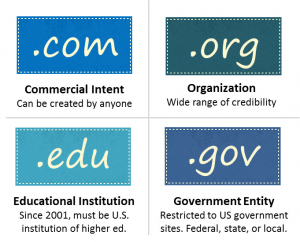4.6: Explora la fuente
- Page ID
- 101062
Considera el siguiente ejemplo.
Usted decide investigar el tema de si los municipios deben agregar fluoruro al agua potable pública.
Una búsqueda en Google produce una combinación de sitios de gobierno, salud y defensa del consumidor, incluido este de un popular sitio web de medicina natural Natural News [Nueva pestaña]. (Mantenga esta pestaña abierta para responder algunas de las siguientes preguntas sobre el sitio.)
1. Comience por examinar la URL
Podrías comenzar con una comprobación rápida de la URL (el enlace) y el dominio; esto te dirá algo sobre el propósito general del sitio. ¿En cuál de las siguientes categorías se encuentra este sitio de medicina natural?

2. Mirar alrededor del sitio
Otra evidencia de un propósito comercial queda clara por la llamativa presencia de anuncios de productos y aplicaciones naturales para la salud, muchos de los cuales no están relacionados con el tema. También tenga en cuenta la tienda en línea. ¿Qué podría decirle esto sobre la intención del sitio?
¿Es posible determinar la exactitud de la información? Los enlaces externos proporcionados en la parte inferior del artículo simplemente se refieren a otros artículos en el mismo sitio web. Una revisión de los dos estudios referenciados no concluye que el agua fluorada cause los supuestos problemas de salud, pero concluye que es necesario investigar más a fondo.
3. Salir de la página
Ahora es el momento de averiguar algo sobre el sitio web y su propietario.
Abra una nueva pestaña o ventana y realice una búsqueda rápida en Google para el sitio web o el nombre del propietario (encuéntrelo en la página Acerca de Natural [Nueva pestaña] Noticias). Escanea los primeros resultados. ¿Cómo se considera el sitio web y su propietario por otras fuentes, a saber, la prensa convencional y Wikipedia?
Observe que la página de Wikipedia para Agua Potable Fluoridada incluye un enlace a la polémica [Nueva Pestaña] que rodea este tema. Da un paso más allá y abre la página de Talk [New Tab] para este artículo. ¿Qué indican los comentarios de los editores de Wikipedia?
¿Quieres más confirmación de que Natural News podría ser menos que confiable? Intente buscar en uno de estos sitios de verificación de hechos:
En suma, tómate unos minutos más para aprender algo sobre la fuente que estás considerando.


